Bonjour,
Nous sommes ravis de partager avec vous le 5ème FOCUS, panel de discussion semestriel de Skinobs dédié à l’évaluation de l’hydratation cutanée. Cette nouvelle publication compte 13 articles, 13 points de vue différents.
Consultez le FOCUS#5 complet en flipbook (en anglais) : FOCUS#5 – Hydration
Consultez le FOCUS#5 complet (en anglais) :FOCUS#5 – Hydration
Les études soulignent toujours que l’hydratation est l’allégation la plus sollicitée par les consommateurs. Depuis les couches superficielles de l’épiderme, les chercheurs étudient progressivement les différentes couches de la peau en analysant l’hydratation globale de la peau. L’hydratation de la peau, en tant que « reine » des allégations, est souvent évaluée pour une large gamme de fonctionnalités telles que le vieillissement, l’apaisement, les propriétés mécaniques, pollution, éclat et teint…
L’hydratation de la peau est la chose la plus importante à considérer pour maintenir le bon état de la peau. L’hydratation de la peau provient des tissus internes et elle est influencée par les conditions physiologiques de la fonction barrière qui régule la transpiration. Le film hydrolipidique de la couche cornée et la structure physico-chimique de l’épiderme, agissent comme une barrière pour réguler la perte en eau protégeant le corps du stress climatique externe, et des stress internes tel que l’inflammation, les changements hormonaux, le vieillissement, l’alimentation…
Evaluation Clinique
Il existe une large gamme d’appareils de mesure permettant l’objectivation in vivo de l’hydratation de la peau en tenant compte de sa surface, de sa structure, de sa perte en eau trans-épidermique. Le principe de mesure le plus connu utilise les propriétés électriques de la peau pour évaluer l’effet hydratant de la couche cornée, de l’épiderme et du derme. La sonde mesure indirectement soit la capacité, soit l’impédance, soit la permittivité avec des caractéristiques spécifiques pour étudier la teneur en eau des différentes couches de la peau.
La deuxième méthode renommée pour étudier le taux d’hydratation de la peau est la méthode indirecte de la perte insensible en eau, appelée PIE ou TEWL. Utile pour les formulations grasses qui ne sont pas faciles à évaluer en utilisant le principe d’impédancemétrie, c’est aussi un dispositif intéressant pour évaluer globalement la fonction de barrière cutanée.
Les autres méthodes de quantification de l’hydratation de la peau
- Analyse micro-topographique
- Spectroscopie infrarouge
- La visualisation de la surface cutanée
- Analyse de la composition des lipides et des protéines
- Le scorage par des experts techniciens et des dermatologues
L’hydratation peut être objectivée à l’aide de méthodes très high-tech et non invasives de différentes manières :
• La visualisation de la structure de la peau
• La teneur en eau moléculaire de la peau
Evaluation in vitro et ex-vivo
Les essais de mesure des propriétés d’hydratation peuvent être mis en œuvre sur plusieurs supports:
- Lignée de cellules 2D, cellules bien caractérisées ou primaires
- Kératinocytes dérivés de csis iPS humains et co-cultures 2D,
- Sphéroïdes 3D
- Les modèles de peau 3D, épiderme, ou derme-épiderme, imprimés ou non,
Voici quelques-uns des biomarqueurs les plus classiques ciblant les différents mécanismes biologiques d’hydratation associés au vieillissement, à la fonction barrière, à l’inflammation, à l’intégrité mécanique ou à la régénération de la peau. La déshydratation peut être simulée in vitro en ajoutant des pourcentages croissants de sels aux cellules ou en éliminant le milieu de culture.
Ces biomarqueurs peuvent être quantifiés ou visualisés par différentes méthodes : expression génique, histologie (morphologie et imagerie) protéines et dosage métabolique (Elisa, Western Blot…) ou d’autres technologies spécifiques.
- L’acide hyaluronique
- Natural Moisturizing Factor [NMF]
- Les Aquaporines
- Les glycosaminoglycanes (GAG)
- CD44, cluster de différenciation 44
- La Caspase 14
- La Filaggrin
- Les Céramides et les phospholipides
- Les métallopeptidases matricielles (MMP)
L’efficaté hydratante des actifs et des produits finis améliore la densité de la matrice extracellulaire dermique [ECM]. Cette « super » matrice joue l’un des rôles essentiels de rétention d’eau du derme avec ce réseau complexe de macromolécules extracellulaires fournissant aux cellules un soutien structurel, bioactif et biochimique.
Il est crucial de prendre le temps avec les CRO de concevoir chaque protocole et de définir précisément, tous les paramètres de l’étude in vitro ou in vivo… Vous ne perdez jamais de temps à discuter de ces éléments essentiels. La performance hydratante des soins de la peau est l’une des revendications fondamentales des soins personnels. Même s’il semble évident de valider cette propriété, il existe de nombreuses options de protocoles, et le choix des méthodes est large et doit être bien documenté.
Parole à nos partenaires
Nous sommes ravis de vous offrir ces différents sujets présentés par nos partenaires :
- Multimodal Hydration by IEC
- Water measurements on the skin – C+K’s Core Expertise by C+K
- Ellead presents a total solution for skin moisturizing evaluation through in vitro and clinical test
- Assessment of Product Hydration Efficacy in Clinical Trials by PCR
- Skin Hydration measurement by Proderm
- Eurofins assesses skincare hydration for different ethnic skin groups
- Winter is coming! This means that it is the perfect time to test hydrating products or moisturizers on the skin by Evalulab
- The cornerstone of facial care by Zurko Research
- Hydration measurement by Pixience by Pixience
- Newtone solution for nomadic or in-lab follow-up of moisturization performance using skin digital imaging & 3D surface micro-relief pattern analysis
- D-Squame with “PAC and iST” techniques for skin proteomics, to characterize skin barrier function and superficial inflammation by Phylogene
- Capture water with Natural Moisturizing Factor by Rachida Nachat-Kappes
- CIDP has developed ex vivo and in vivo methodologies to determine the efficacy of moisturizing products
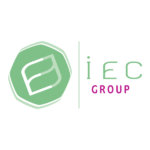
Multimodal Hydration by IEC
Jean-Robert CAMPOS | Scientific Director
Test your moisturizing products with multiple devices, in multiethnic panel under various climatic conditions
The skin, the largest organ of the human body, can exchange with its environment while protecting itself from external aggressions.
On the surface of the skin, the hydrolipidic film contributes to maintaining a protective barrier, in particular its level of hydration by regulating water exchanges and maintaining a supple, soft, and comfortable skin.
To keep the skin hydrated and prevent skin ageing by maintaining a certain elasticity and a radiant complexion, it is not only essential to drink but also to moisturize the skin with cosmetic products whose effectiveness has been proven by clinical tests during a controlled Kinetics and/or in use tests.
To address the issue of hydration, IEC suggests various subjective tests (scoring, self-assessment) associated with instrumental measurements. These measurements of the skin’s hydration state can be carried out directly by quantifying electrical or electromagnetic properties of the skin or indirectly by assessing skin surface, texture and entropy.
Corneometer™ CM 825 [Courage + Khazaka]
This « classic » equipment measures the electrical capacity (a.u.) and is commonly used to obtain basic information on the hydration of the superficial layers of the skin (stratum corneum) of different parts of the body (face, lips, forearms, legs, etc.), during in use tests or controlled Kinetics over 8, 10 or 24 hours.
A model of the hydration of the different areas of the face can be obtained by carrying out 30 measurements on each hemi-face (i.e. 60 measurements in total) allowing a establish cartography [Mapping by Newtone Technologie] and thus to visualize the most hydrated areas over time.
Moisture Map® MM100 [Courage + Khazaka]
It measures the penetration of the electromagnetic field and complement to the classic hydration measurement mentioned above, which allows a mapping of surface hydration. The images and measurements of the micro-depression network (RMD) also give perspectives in the evaluation of skin texture (roughness, etc.).
VisioScan® VC 20 plus [Courage + Khazaka]
Several parameters relating to skin hydration can be assessed with this device:
- Skin surface parameters such as smoothness, roughness, desquamation.
- Texture parameters such as entropy, homogeneity
- Anisotropy index which decreases for a more hydrated skin.
C-Cube® [Pixience]
The C-Cube is based on an Ultra-HD camera, LED lighting and a colorimetric, geometric and 3D calibration that provides information on the degree of hydration of the micro-relief (roughness/Smoothness; symmetry/sharpness). It is also possible to obtain other data such as the isotropy and dryness of the micro-relief or even the quantity of scales.
Skin Cam®- [Newtone Technologies]
This compact and nomad device, which can be used both in the laboratory and by the subjects at home, provides among other data on the texture and roughness of the micro-relief through a 3D analysis.
Squames Analysis Station [Monaderm]
The purpose of the Quanti-Squames® software is to analyze and quantify the amount of scaling (occupied surface area and the scaling index) on the surface of skin collected using D-Squames™.
Silicone Skin Replicae Analysis Station [Monaderm] or Fringes Projection [EOTECH]
Using Quantilines®[Monaderm] and AEVA [EOTECH] softwares, an indirect analysis of the micro-relief is carried out on cheek silicone replicae, which gives the roughness and smoothness parameters of the skin.
ColorFace® [Newtone Technologies]
Based on multimodal acquisitions of the full face, the Colorface can be used for texture (contrast, entropy) and roughness analysis under cross polarization modality.
IEC offers protocols combining in Use Tests with various techniques mentioned above under standard environmental conditions, but also under specific climates in multiethnic panels due to the geographical distribution of its testing centers [Europe, Asia, Africa], : continental with harsh winters [Sofia, Bulgaria], equatorial with heat and humidity [Singapore], Mediterranean with dry summers and winters with drying sea winds [Cape Town, South-Africa], and also in France, Japan, China and Korea for a global appraisal of moisturizing performances for cosmetic products.
Contact: jr.campos@iecfrance.com
Discover IEC Group profile and instrumentation on the Preclinical and Clinical Platforms: IEC Group

Water Measurements on the Skin Courage + Khazaka’s Core Expertise
Diana Khazaka | General Manger Courage + Khazaka
The moisture in the stratum corneum and the quality of the skin barrier function are the most important basic parameters and relevant for all products and other materials that are applied to or meet the skin.
That is why Corneometer®, the gold standard for measuring the water content of the stratum corneum (SCH), and Tewameter®, the gold standard for measuring transepidermal water loss (TEWL), are indispensable in the worldwide R&D of cosmetics, pharmaceuticals and household products. They are used daily as robust, accurate « workhorses » in the respective work and studies.
The measurements around the water content of the skin belong to the area in which C+K has an absolute core expertise. So, we are pleased to present two devices that illuminate this important parameter from other angles and are therefore a perfect complement to the « gold standard ».
State-of-the-art capacitance imaging with new hard- and software – MoistureMap MM 200
Capacitance imaging is based on the renowned L’Oréal SkinChip®*. The sensor gives graphical information on the near surface hydration distribution and the micro-topography of skin and other tissues (textiles, plants, etc.). The new MoistureMap MM 200 (successor of the MM 100) features new hard- and software. The very flat sensor surface without any metal rim and a capture-button on the probe facilitate the taking of high-quality images. The convenient, modern software offers new functions and parameters. 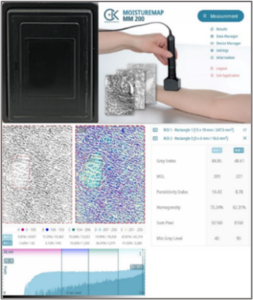
MoistureMapping: analyse the distribution/homogeneity of hydration on the skin surface (results known from the various L’Oréal publications, a permittivity result, and more) presented in an easy to understand graphical and numerical way. Compare even different ROI in one image. With optional accessories, the MoistureMap is well-suited for in vitro measurements.
Micro-topographic results: As the sensor has no contact to the skin where lines and wrinkles are, they are perfectly visible in the image (background – no signal). In addition to looking at hydration, topographic measurements (polygon size, corner density, anisotropy index) give interesting aging parameters.
Impressive ”3 D”-style images to add to your documents and publications.
Take a video (.avi) to show kinetic effects of moisture distribution: select the number of frames you want to analyze to show a development over time, especially useful for in vitro applications, occlusion studies, etc.
*MoistureMap is licensed worldwide under the L’Oréal patent for the Skin Chip® (EP 1 438 922 B1). A variety of articles on the measurement principle have been published.
Unique new instrument to assess skin’s wettability by drop shape analysis – Drop Angle Meter DM 300
Analyzing the shape of a drop of water on a surface and determining its contact angle is a well-known method to characterize wettability, skin’s free surface energy, its tension, and its hydrophilic/ hydrophobic properties.
When a defined droplet is applied to the skin, the drop forms a certain shape. The point at which the skin, liquid and air meet determines the contact angle. Water forms droplets with contact angles 90 degrees and higher on a hydrophobic (low energy) surface and less than 90 degrees on a surface. The larger the contact angle the lower the wettability and vice versa. Higher wettability indicates more moisture at the skin surface (hydrophilic – higher surface energy). The compact Drop Angle Meter DM 300 features a very uniform diffuse LED light source, a flexible arm rest and a high-resolution camera, that takes the macro image of the drop on the skin from the side, which is then analyzed in the modern, convenient software.
The Drop Angle Meter is a perfect addition for:
- Effect of products on the skin (degreasing, washing, moisturizing)
- Testing spreadability
- Testing water repellence of products, for example lip gloss or nail polish
- Tissue engineering, e.g., skin grafts for scars (improved adhesion of cells with increased wettability)
Both, MoistureMap MM 200 and Drop Angle Meter DM 300, feature connections for Corneometer® and Tewameter®, thus allowing you to create a sophisticated “water measurement center”.
Contact: info@courage-khazaka.de
Discover Courage & Khazaka profile and instrumentation on the Clinical Platform: C+K
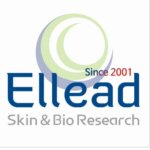
Ellead presents a total solution for skin moisturizing evaluation through in vitro and clinical tests
Sunhwa Lee
There are many evaluation methods to check the moisturizing effect of the skin, and Ellead evaluates not only the skin moisture but also trans-epidermal water loss through various equipment. Raman Spectroscopy is the most powerful tool to directly evaluate skin moisture, noninvasively. Ellead evaluates the change of the water contents and natural moisturizing factor (NMF) through Raman-based hydration status analysis (Fig.1).
Fig 1. Raman-based hydration status analysis
Raman Spectroscopy is a non-destructive technique based on the scattering of light by molecules. In a Raman scattering event, part of the energy of the incoming light is transferred to a molecule, thereby excites one of the molecule’s vibrational modes. Since every molecule contributes to the overall Raman spectrum, it is a direct representation of the overall molecular composition. As such the Raman spectra can be used as highly specific spectroscopic fingerprints, that enable the identification or classification of cells and tissues. By using these principles, the main role is to measure the skin penetration of topical formulations. But also, the water content and NMF changes in the skin tissues and cells.
There is also a moisturizing evaluation method based on the principle of electrical conductivity on the skin surface and sub-surface using Corneometer®, Epsilon® and MoistureMeterD®. The results by using these methods can be expressed numerically and the effect of moisturizing can be expressed through a color scale (Fig.2).
Fig 2. The Visual evaluation of skin hydration
Ellead can design various moisturizing evaluations. The skin moisture effect can be evaluated the skin moisture effect according to the environment of season in the temperature and humidity control room. It is possible for us to evaluate the skin persistence for up to 24 hours or 48 hours. If you are curious about the skin hydration status after a workout or a sauna, you can check it out at Ellead.
Ellead can evaluate not only the clinical evaluation of cosmetics, but also the moisturizing of raw materials through in vitro test. The major factors related to skin moisturizing are Aquaporin3(AQP3) and Hyaluronan Synthase 2(HAS2). Skin moisture balance is regulated by hyaluronic acid (HA) and natural moisturizing factors (NMFs). HA promotes skin hydration and plastic properties of the skin and is synthesized by hyaluronic acid syntheses. Moreover, HA stimulates the cell proliferation and differentiation of keratinocytes. Hyaluronan Synthase 2(HAS2) induces HA synthesis in skin keratinocytes. Another important gene in skin hydration is aquaporin 3 (AQP3). AQP3, water channels are involved in various physiological functions, such as cellular metabolism, water balance, and wound healing through transporting glycerol and water. In particular, AQP3 found in the epidermal basal cell layer plays an important role in skin barrier function and facilitates differentiation in keratinocytes. Ellead provides skin moisture factor AQP3 and HAS2 mRNA expression analysis services in keratinocyte by using RT-qPCR assay, it can detect the enhanced moisture potential of cosmetic ingredients (Fig. 3).
Fig 3. Skin moisture factors
Contact: ellead@ellead.com
Discover Ellead profile and instrumentation on the Preclinical and Clinical Platforms: Ellead
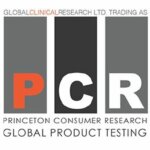
Assessment of Product Hydration Efficacy in Clinical Trials by Princeton Consumer Research
Dr. Nalini Kaul | Ph.D. Vice President Technical
Hydration or moisture of the skin means the moisture content of the stratum corneum (SC). The hydration level of our skin helps determine whether our skin is beautiful, bright, healthy, or dry, parched, tight and rough. The epidermis is composed of different layers. At the bottom layer, known as the stratum basal, the cells divide and push already formed cells into the higher layers. As the cells move into the higher layers, they flatten and eventually die. The top layer of the epidermis, known as the stratum corneum, is made up of dead, keratinized cells that shed about every two weeks. While the amount of water in the inner layers of the skin is relatively constant, the moisture in the SC depends on different factors:
- the rate at which the water in the dermis reaches the SC
- the rate at which the water is eliminated by evaporation (Trans Epidermal Water Loss-TEWL)
- and the ability of the SC to retain water.
Our skin barrier helps prevent excessive water loss through evaporation and helps guard it from external stressors. Scrubbing, friction, or abrasion may partially or completely remove the SC and thus disrupt the skin barrier by exposing the viable and water-rich epidermis to the environment. Presence of natural moisturizing factor increases the ability of the SC to retain water. The water content of the SC is thus a delicate balance between the deeper layers of the skin and the environment. With aging, our skin is less capable of retaining moisture and as a result gets dryer. When skin gets dehydrated, the skin barrier is compromised.
A primary objective in skin care is for the skin to be optimally hydrated. In fact, hydration claims top the list when it comes to cosmetic products. The market is full of products that promise immediate, locks in moisture/ long lasting and /or sustained hydration which need appropriate testing designs to evaluate these claims. Moisturizers work either by attracting moisture from the atmosphere into skin (humectant) or they create a barrier and restrict water loss from the skin (emollient) and they also reduce skin friction and increase hydration. It is important to design and test the product with the claims in mind. Methods to evaluate skin hydration include measuring the electrical capacitance with the help of the Corneometer® CM825 (C+K), Visual assessments and Self Perception Questionnaires. An altered skin barrier function it is normally marked by an elevated TEWL (e.g., in atopic dermatitis and psoriasis or in studies using solvents and detergents). Elevated TEWL values in disturbed skin barrier are frequently correlated with low hydration within the SC.
There should be an inclusion in the study design of an untreated site along with a positive control like glycerol or petroleum jelly depending on whether the moisturizer is a humectant or occlusive in nature. Investigational moisturizers are usually tested on volar arms or lower lateral legs. Change from baseline in visual evaluations along with Corneometer values at baseline, immediately after supervised product application, and as designed at 4, 8 and 12 hours and sometimes up to 24/48 and/or 96 hours depending upon the claims to be made are determined. For TEWL determination a Tewameter® TM300 (C+K) is used.
In anti-ageing, products ingredients like hyaluronic acid/retinol and its derivatives/alpha hydroxy acids like glycolic acid are routinely added for hydration. Usually, study design of 4 weeks or more is selected to allow for complete turnover of corneocytes. Skin surface hydration is evaluated visually by a trained grader at baseline and then at 2 weeks and 4 weeks along with Corneometer® and Tewameter® recordings.
Study 1: N=30 healthy M/F were used to evaluate moisturization efficacy up to 24 hours in a randomized blinded study design after a single application of TA to sites on lower lateral side of legs.
*Significant changes from baseline at all time points up to 24 hours
Study 2: Antiaging study: 31 Healthy M/F (35-75y) in a single blind monadic design for a 4-week study period.
*Significant change from baseline
Antiaging Study-Skin attributes and VISIA Analyses
In conclusion employing proper study designs is important for moisturizing product efficacy determinations and substantiation of related claims on dry skin. In the studies presented above topical applications of the products led to increased skin hydration and decreased TEWL, thereby substantiating the “restores hydration” claim for the products studied.
Contact
Canada: elsiekohoot@princetonconsumer.com
U.K: kirstiemaguire@princetonconsumer.com
USA: lisalong@princetonconsumer.com
Discover Princeton Consumer Research profile and instrumentation on the Clinical Platform: Princeton Consumer Research

Skin Hydration Measurement by proderm
Stephan Bielfeldt | Director Research
Measuring skin hydration in humans can be a complex process due to the nature of instruments (despite ease of use), what is being measured, and how relevant this is to the consumer. Classic methods used for measuring skin hydration rely on measuring water capacitance and/or transepidermal water loss (TEWL) using e.g., a Corneometer® or an open or closed chamber TEWL-probe. More advanced methods can provide moisture imaging or even molecular information on not only the water content in different layers of the stratum corneum, but also the state of its molecular mobility. This article aims to present two of such advanced methods.
Moisture Imaging Systems such as the Epsilon® measure the skin hydration by assessing the electrical permittivity (epsilon = di-electrical constant) or the capacitance. Moisture imaging systems have ~20 micron sensing depths that confine the measurement predominantly to the stratum corneum. The system has 76800 sensors on an area of 12.8 x 15 mm, whereas standard devices have only one. Its signal processing technology converts the non-linear sensor output into a linear and calibrated response, which then correlates highly to other di-electrical devices such as the Corneometer® values. This technique can visualize dynamic parameters of hydration e.g., in a Moisture Accumulation Test (MAT). A video is taken and shows the accumulation of water under occlusive conditions by the sensor. The Area Under the Curve (AUC) is defined as the area over the time points of measuring Epsilon® on the occluded area during the live video. The bigger the AUC the higher is the mean moisture accumulation per time.
Using Raman spectroscopy, we can determine certain molecules in the skin without damaging it. Raman is by far the most advanced method for studying skin “hydration” in vivo and measures the vibrational properties of molecules via the inelastic light scattering. This
provides information on the molecular composition and structure of the skin. It is a laser-based, non-invasive method that enables the measurement of various parameters. Raman confocal spectra in the high wavenumber region highlighting the bands of CH stretching and OH stretching can be used for the calculation of water content and of the water molecules in different states based on their mobility. Up to three states:
- “bound, »
- « intermediately mobile » and
- « most mobile »
water can be discriminated.
Raman spectroscopy is a non-destructive, non-invasive technique which can be used to monitor skin hydration depth profiles, water gradients in tissue, drug delivery profiles and NMF (natural moisturizing factors) composition.
Detailed information regarding the molecular composition of the skin can be read from the positions, relative intensities, and shapes of the bands in the acquired Raman spectra.
To conclude, with the rapid advances in skin care innovations and the increasing desires of consumers for solid performance products, expectations for “moisturizers” to deliver are very high. Valid instrumental developments to provide claim support are not only keeping pace with product technologies and consumer needs, but also contributing to the continued advancements in skin barrier function knowledge and hydration processes. Combining such instrumental methods with consumer self-assessed and expert witness adds gravitas to the weight of evidence generated for hydration studies.
Contact: AJourdren@proderm.de
Discover proderm profile and instrumentation on the Preclinical and Clinical Platforms: proderm

Eurofins assesses skincare hydration for different ethnic skin groups
Sarah Bachir-Levy | Global Marketing Leader
As lack of hydration can affect all skin types, it’s one of the most common concerns of consumers around the world. Several studies have been conducted to find adequate solutions, but the need for moisturizing products that are tailored to different skin groups is still a challenge.
Several past and recent overviews have demonstrated significant variabilities of quantifiable parameters between different ethnicities, such as
- skin hydration,
- TEWL,
- skin surface
- pH,
- sebum,
- water content,
- ceramide levels, and
- skin reactivity gradients,
suggesting anatomical or physiological property differences across skin groups.
As skin hydration is increasingly becoming a topic in different communities, cosmetics and personal care companies are looking to address a more diversified audience with targeted solutions and patient-specific regimens to treat lack of skin hydration. This strategy requires a different approach, whereby companies must consider different parameters in clinical trials, such as: structural and functional specifics,
- skin biochemistry and physiology,
- inter-ethnic and intra-ethnic skin,
- beauty ritual inspirations,
- moisturizer application,
- environmental factors,
and more.
With a worldwide network of 18 clinical laboratories across five continents, Eurofins has access to a wide panel of 100,000 subjects of diverse ethnicities with specific criteria, including, but not limited to, degree of dry skin, age, and specific pathologies. This allows us to undertake multi-centric trials with a dedicated recruitment process that considers different skin and environmental factors to perfectly fit hydration criteria.
Our international clinicians and dermatologists are very knowledgeable on skin types across different ethnic groups, to develop customized tests to assess the hydration benefits of skin care products.
We aim to address the complexity of facial skin moisturization needs in greater depth, as well as the need for different products for differently hydrated skin types, by offering multi-technical approaches:
- Clinical assessment: Clinical scorage, self-assessment, photo/dermatoscope, etc.
- Biometrology assessment: Corneometer, moisture map, mapping analysis of facial skin hydration, TEWL, isotropy, D-squames, quantisquam, MoistureMeterD®, surface sampling to analyze NMF and lipids, etc.
Multi-site access and diverse panelists open up substantial innovation opportunities for more efficient, multiethnic moisturizing care.
Contact: cosmetics@eurofins.com
Discover Eurofins Cosmetics & Personal Care profile and instrumentation on the Clinical Platform: Eurofins

Winter is coming!
This means that it is the perfect time to test hydrating products or moisturizerson the skin
Elisabeth Fiquet | President
Brands require that their products be tested under the conditions closest to instructions of use, hence the need for representative subjects in terms of:
- ethnic groups,
- skin types (normal, dry, oily, or sensitive) and
- environmental conditions (extremely cold or hot).
Evalulab has conducted over a thousand clinical studies for over 20 years on the efficacy and safety of topical products in the coldest conditions of North America.
Winter is coming! This means that it is the perfect time to test hydrating products or moisturizers on the skin.
How do you demonstrate that a topical product hydrates?
Epidermal moisture of the stratum corneum can be assessed by non-invasive in vivo instrumental testing method based on the capacitance, an electrical property of the skin, expressed in arbitrary units via the Corneometer®.
To clinically evaluate the hydration levels, measurements are taken before the application of the product to be tested at time t=0 and then at various times after application of the test product.
The skin has a barrier role against the external aggressions for the body. In healthy and intact skin, the barrier function is effective and water loss rates are very low.
If the barrier is compromised due to pathological, physical, or chemical damage, the rate of trans-epidermal water loss increases, indicating a degree of damage. Thus, the Tewameter® is used to measure the rate of water loss through the skin and to determine the state of health of the skin.
Evalulab guarantees the validity and authenticity of the study results by adhering to the strict measures put in place by the test protocol, good clinical practices (GCP) and by requesting approval of study protocols by an ethics committee.
Also, Evalulab has developed standard protocols to evaluate the short- and long-term changes of one or more topical products, to verify the level of hydration or their capacity to repair the skin barrier in cold, normal and/or extreme weather.
Contact: efiquet@evalulab.com
Discover Evalulab profile and instrumentation on the Preclinical and Clinical Platforms: Evalulab
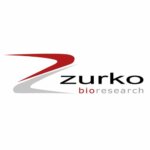
The Cornerstone of Facial Care
Sabina Giovanni | Chief Executive Officer
The skin, as the largest organ in the body, is daily exposed to external agents that can alter its characteristics; water is essential for its proper functioning.
At present, we see more and more new and increasingly advanced claims. But the importance of guaranteeing basic aspects in our skin care routine, such as maintaining optimal hydration, should not be neglected, this optimal hydration will provide both aesthetic and functional benefits.
The stratum corneum of the skin is the outermost layer of the epidermis, and the one on which cosmetic products can have the greatest effect. As for cosmetic products, we could highlight in their composition different substances designed to improve skin hydration.
We can differentiate between moisturizing substances, which are those preparations that release water to the stratum corneum, usually solutions or emulsions of external aqueous phase. We can also find formulations aimed at forming an occlusive film to reduce transepidermal water loss, and thus prevent dehydration.
Finally, the moisturizing substances would be those hygroscopic substances that have the property of absorbing water from the environment, thus increasing the hydration of the skin.
Regarding the formulations, we could make two large groups, leave on and rinse off products.
In rinse off products, what we will generally look for is that the use of the products does not alter the skin by dehydrating it. On the other hand, for leave-on products we will seek an increase in skin hydration.
The ideal execution for these types of tests is to try to test them on a type of dry skin, more prone to changes in terms of hydration values. And of course, count, whenever possible, with an experimental control zone without product application.
In addition to performing instrumental measurements, we can also evaluate certain parameters related to xerosis of the skin using several widely recognized clinical scales. These scales can involve subjective opinion parameters such as itching to be evaluated by:
- the panelists,
- visual evaluations of parameters such as flaking, redness and cracks
- tactile evaluations, for example of roughness or smoothness by one or more specialists.
In conclusion, hydration of the skin is essential to maintain its good health and avoid skin alterations with repercussions on all skin types and especially on those skins with a tendency to xerosis.
It is convenient to use cosmetic active ingredients on a daily basis that, in one way or another, allow the skin to be properly hydrated.
The ideal protection against dehydration is based on applying preparations with hydrating active ingredients daily, and not waiting for the skin to show symptoms of dryness.
Depending on the type of skin and age, it is important to select the type of substance or a combination of these to use the best treatment in each case.
Contact: info@zurkoresearch.com
Discover Zurko Research profile and instrumentation on the Preclinical and Clinical Platforms: Zurko Research

Hydration Measurement by Pixience
Sebastien Mangeruca | CEO
French leader in digital dermoscopy, Pixience works closely with dermatologists and researchers to develop high quality products for skin and hair imaging and analysis.
We strive to bring you innovative instruments that are accurate, reliable and consistent. This is the reason why 50+ dermo-cosmetic laboratories, CROs, and universities around the world have chosen our products for their product efficacy studies.
More than a mere dermoscope, C-Cube® Clinical Research – Or C-Cube CR – is the most versatile instrument for color and surface analysis, specifically designed to be used in dermatology and cosmetic clinical trials.
Its patented glossless lighting and exclusive color calibration turn each of its 10 million pixels into an actual color measurement. It also works as a handheld 3D scanner with micrometric resolution, allowing quantitative analysis of the smallest changes in microrelief. With these exclusive features, C-Cube® Clinical research can be used to evaluate a variety of product effects: anti-aging, sun protection, moisturizing, pores and seborrhea, blemish, and pigmentation, and of course, haircare.
One of the many uses of the C-Cube® CR is hydration measurement. Hydration, a fundamental characteristic of the skin, is more complex than a simple water content. Poor hydration has consequences on flaking, micro-relief, roughness and potentially inflammation.
C-Cube® Clinical Research makes it possible to observe, illustrate and quantify these consequences of dehydration.
From the calibrated color photographs of the C-Cube, and thanks to its wide field of view, you can evaluate the flaking, directly on the skin, or on scales sampling strips.
Thanks to the 3D reconstruction module, observe the micro-relief and analyze the isotropy of the furrows, or measure the local roughness, disturbed by poor hydration.
- Amount of scales (in-vivo or on Sebutape)
- Roughness (Sdr, Sa, Sq)
- Isotropy of micro-relief
We invented C-Cube® Clinical Research to bring you unique observations and convincing illustrations, and to offer an innovative alternative to the many single-application probes and instruments you are used to work with. Soon you may include the C-Cube® in most of your studies.
Equip yourself with a hydration analysis device that will allow you to clearly visualize and illustrate the action of moisturizing active ingredients.
Contact: sales@pixience.com
Discover Pixience profile and instrumentation on the Clinical Platform: Pixience
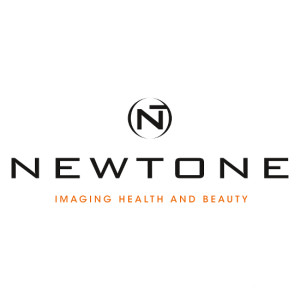
Newtone solution for nomadic or in-lab follow-up of moisturization performance using skin digital imaging & 3D surface micro-relief pattern analysis
Elodie Prestat-Marquis | C.O.O
The Newtone family of solutions specializes in creating and developing increasingly powerful customized interpretation algorithms and acquisition systems, to help Cosmetic Industry to Innovate, Explore and Develop new products for all countries.
One challenge addressed by Newtone is to develop solutions enabling to measure “ground truth”: what the consumers actually see in their mirror. To help investigate moisturizing product performance, Newtone developed a specific optical solution and algorithms, for a combined approach using local visible light and 3D imaging with powerful algorithm for the analysis of skin micro-relief pattern.
Newtone portable high-resolution camera allows rapid at-contact acquisition and analysis of versatile skin features: colour and complexion, lentigos, acne, etc., but also topographic features such as wrinkles, fine lines, or roughness. Its capabilities have now been evaluated for several years, either under nomadic conditions (by the consumer, at home, under real conditions of life), or under controlled conditions, by a technician, at the clinical lab.
It proved its efficiency to follow-up skin changes overtime to various face, scalp, or body locations (hands, forearms, legs, feet etc.).
One research was presented to the ESDR congress in September 2020, showing how this approach enables to measure and compare moisturizers efficacy overtime, under a nomadic context, versus untreated skin by analysing skin microrelief and monitoring its changes upon moisturizers application, to the forearm (poster available upon request).
Indeed, the skin surface roughness is an indicator of major interest for dermatology and cosmetology. Increased in xerotic skin or irritation, it is one of the most common frequent dermatological disorders. In addition to the discomfort triggered by dry skin, the associated roughness and unevenness degrade the appearance of the skin. Yet even a young and healthy skin presents a pattern of fine and isotropic microrelief that contributes to its resistance and to the skin’s soft and velvety aspect due to the light scattering it induces.
It consists of polygonal plateaus, mainly triangles or quadrangles, delineated by furrows.5 7 These furrows are classified according to their length and depth. The only ones visible with naked eye are the primary lines, the widest and the deepest (30-100µm deep relative to the skin surface), while secondary lines are shallower (5-40µm) and narrower. Many intrinsic and extrinsic factors influence the skin microrelief, including skin dryness.
Objective and quantitative evaluation of the skin microrelief is an essential aspect of dermo-cosmetic, especially when it comes to claims substantiation. Newtone camera, connected in real-time to data storage and analysis servers, combined with software suites, proved its potential in analyzing the skin microrelief various parameters under moisturizing effects, sometimes showing a longer efficacy lasting than when measured with classical method (corneometry).
NEWTONE. Poster Microrelief & Hydration 70×100 HD (2)
Contact: eprestat@newtone.fr
Discovery Newtone profile and instrumentation on the Clincal Platform: Newtone
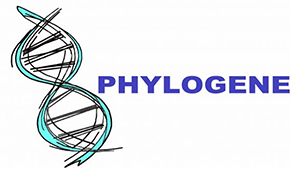
D-Squame with “PAC and iST” techniques for skin proteomics, to characterize skin barrier function and superficial inflammation
Gilbert Skorski – CEO | Romuald Arnaud – Business Development Manager
The skin is a barrier membrane that separates environments with profoundly different water contents. Barrier properties are assured by the outer layer of the skin, the stratum corneum (SC), which controls the transepidermal water loss (TEWL). The glandular nature of the skin and its bacteria / fungi composition is
making it prone to lipids metabolism and salts secretions as well, affecting TEWL.
Even though the microbiome role in inflammation / infection is currently subject to intensive research, its implication in lipids metabolism and thus TEWL is also to consider. Metaproteomic analysis are well suited for taxa’s ecosystem characterization and elucidate functional interactions between skin and its microbiota.
Several sample types are available for dermo-cosmetic studies (reconstructed skin, skin explants, strips, swabbs), but non-invasive techniques on patient cohorts remain the ones of choice since they allow replicas, more flexible studies design and overall, a direct work on the stratum corneum.
Stripping remains the more efficient and easy way of sampling although these sample types present significant technical challenges during proteomic analysis. From samples preparation to extraction, several critical steps are to be taken care of with caution to avoid samples loss of integrity. Moreover, glue, plastic polymers are major contaminants that must be removed before digestion and mass spectrometry analysis.
To overcome these technical issues and for continuous improvement in dermo-cosmetics, Phylogene developed new “PAC and iST” techniques for skin proteomics described hereunder.
When 6 D-Squame were previously necessary, only 1 D-Squame is now enough for an improved recovery yield of proteins! Just few D-Squame are now sufficient to obtain proteins identification and function, making the hydration substantiation easier with the associated bioinformatics analysis.
D-Squame with “PAC and iST” techniques for skin proteomics, to characterize skin barrier function and superficial inflammation.
High-resolution nano LC-MS/MS quantitative proteomics and CORAVALID™ data processing, the efficient tools for discovery.
Contact: g.skorski@phylogene.com
Discover Phylogene profile and instrumentation on the Preclinical Platform: Phylogene

Capture Water with Natural Moisturizing Factor
Rachida Nachat-Kappes, PhD, Cell and Skin Biologist, Scientific Consultancy, Education
Imagine suddenly being teleported from a humid tropical zone to a desert where drought reigns! Well, that’s what happens to our epidermis. While the deep « living » layers contain around 65% water, this rate drops to only 15 to 20% in the most superficial part of the horny layer, the stratum disjunctum, made up of the accumulation of dead anucleated cells, the corneocytes, resulting from the keratinocyte terminal differentiation programme. As the boundary with our environment, the stratum corneum (SC) was for a long time considered as a simple inert interface, lifeless and therefore of little use.
The continuous evolution in the understanding of the physiopathology of cutaneous disorders has highlighted the vital barrier functions that it provides. The barrier properties of the SC involve the formation of a rigid protein shell, the cornified envelope; inter-corneocyte lipids and their lamellar structural organization; but also, a mixture of small molecules called Natural Moisturizing Factor (NMF).
Composition of the NMF
The compaction of intermediate keratin filaments is ensured by the presence of a protein associated with intermediate filaments: filaggrin. But this protein also participates in skin hydration thanks to its proteolysis into hygroscopic amino acids, which are constituents of the NMF, in the most superficial part of the SC (Figure). More than 50% of the NMF is made up of free amino acids and water-soluble derivatives, such as pyrrolidone carboxylic acid (PCA) and urocanic acid (UCA), which are, respectively, a derivative of glutamine, which is highly hygroscopic, and a derivative of histidine, the deamination of which is catalyzed by a histidase. The NMF also contains lactic acid, sugars and other molecules with a very high-water uptake capacity.
Function of the NMF
NMF is present in the corneocytes and can represent up to 30% of the dry mass. Thanks to its strong humectant properties, it can capture a large quantity of water from the ambient humidity (up to 3 times the dry weight of the SC). The hydration provided by the NMF is essential for the activity of the numerous corneocyte enzymes, such as proteases involved in desquamation process (SCCE, SCTE, cathepsin D…), phospholipases, responsible for the acidification of the SC (~pH 5.2). This acidic pH regulates the skin microbiota, and activates lipid hydrolases necessary for ceramides synthesis and the integrity of the lipid barrier. Neutral and/or basic amino acids of NMF interact with keratins via ionic bonds and contribute to the elastic properties of the SC to maintain its relative flexibility. UCA acts as a natural UV filter, it has an immunomodulatory role and is involved in the acidification of the SC.
In humans, numerous abnormalities in filaggrin expression or maturation have been identified. Particularly in 2006, when two loss-of-function mutations of filaggrin were discovered which affect 9% of the European population and which are both a predisposing factor for atopic dermatitis and a cause of ichthyosis vulgaris, characterized by intense skin dryness.
Figure legend:
Immunoelectron microscopy observation of filaggrin with immunogold staining method (Dark spots). In the stratum disjunctum, the filaggrin is deiminated by PAD1 and 3 and is proteolyzed to produce the free amino acids of the NMF (demonstrated by the disappearance of the gold particles).
Contact: rachida@innovskin.com
Access free online MasterClass in French « Comprendre la peau et ses besoins » : https://formation.innovskin.com/registration
CIDP has developed ex vivo and in vivo methodologies to determine the efficacy of moisturizing products
Florence FOURNIER | Client Relationship
Skin hydration plays an essential role for the barrier function of the skin and helps to shield from exposome such as pollution, ultraviolet radiation and prevent microbial contamination on the inside of the body. A hydrated skin physically limits water loss and prevents evaporation of essential ions and amino acids. Moisturizing skin care occupies a major segment of the cosmetics and Skin care market. CIDP, leader in dermatological testing, has developed several ex vivo and in vivo methodologies to determine the efficacy of moisturising products. Ex vivo, human skin explants can be used where biological markers implicated in cellular cohesion and cell-cell junctions can be monitored. This includes biomarkers such as Claudin-I, Occluding-I, Integrin and Collagen. Lipid synthesis as well as the epidermal differentiation and extracellular matrix synthesis can also be evaluated to determine the hydrating effect of a cosmetic product.
In healthy volunteers, the skin hydration can be evaluated based on the electrical properties of the skin such as conductance and capacitance that change with the water content of the skin. For this purpose, equipment such as the Corneometer® CM820, Tewameter® TM 300, VapoMeter can be deployed.
Contact: f.fournier@cidp-cro.fr
Discover CIDP profile and instrumentation on the Preclinical and Clinical Platforms: CIDP
Bonne lecture !
L’équipe Skinobs

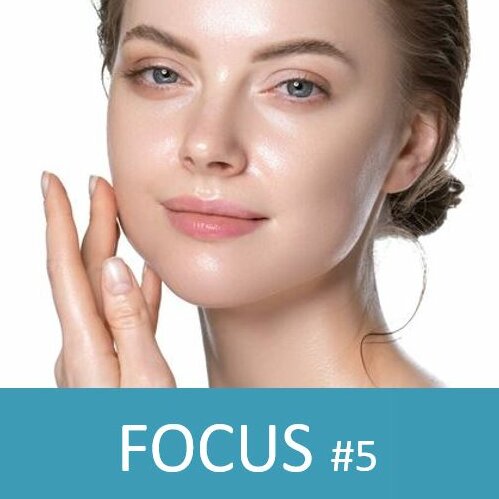

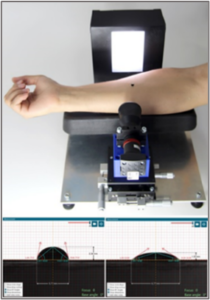
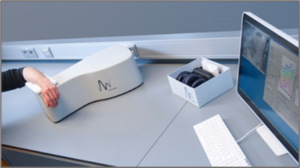

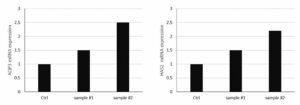
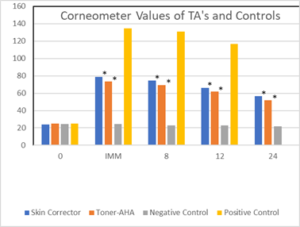
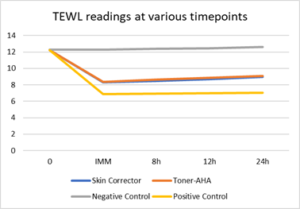
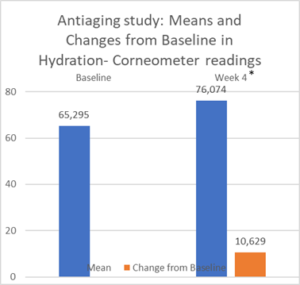
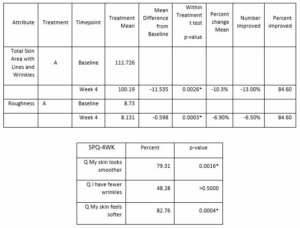
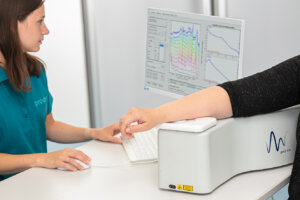
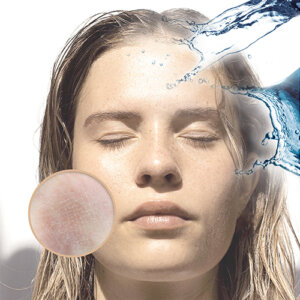

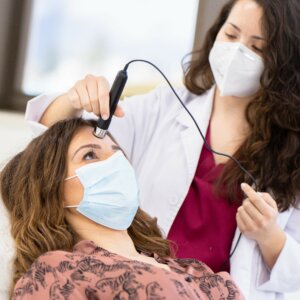
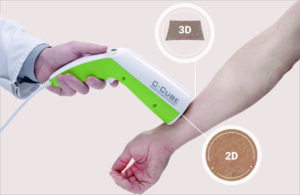
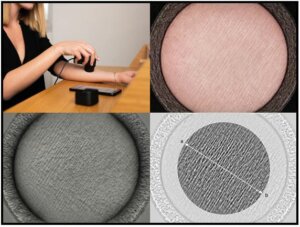
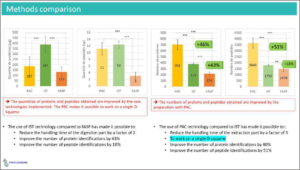
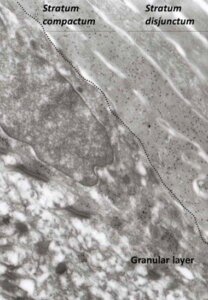
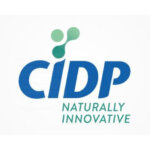
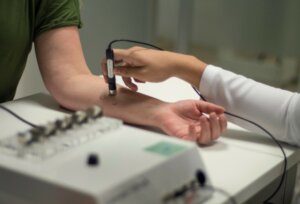
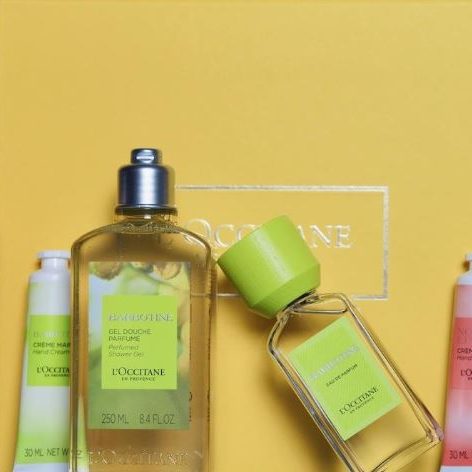






 Follow us on Linkedin!
Follow us on Linkedin!
Vous devez être connecté pour poster un commentaire.